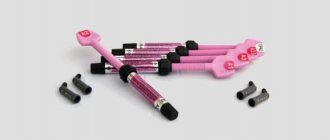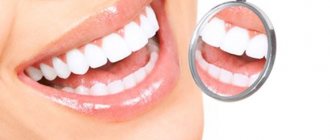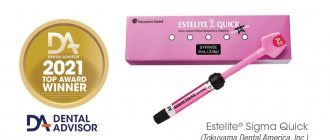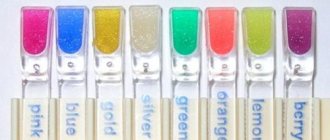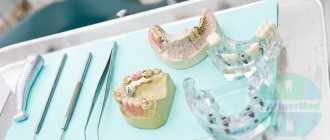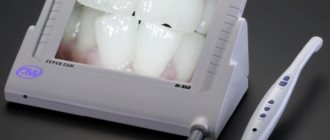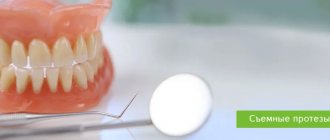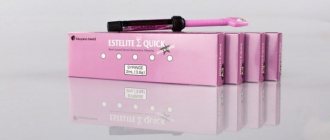8454
Those years when a visit to the dentist and the procedure for filling an affected tooth were the subject of physical and moral torment are far in the past.
Now, thanks to innovative scientific developments, high-quality and safe materials and modern equipment, monitoring the health of the oral cavity and promptly eliminating problems that arise has become comfortable and harmless.
This article will discuss the currently best filling material Estelite.
General overview
Estelite Sigma Quick is a modern composite mass, specially developed by Japanese specialists in the field of dental practice for filling teeth.
The drug is a universal set of elements characterized by radiopaque characteristics and excellent light-curing properties.
Combined with a high aesthetic factor and fast polymerization processes, the material has proven itself in clinics around the world, being one of the best products among its product range.
What is a light seal and how is it different from a regular one?
Light filling refers to modern composites that are manufactured under the influence of a strong light source. This material contains a substance that is sensitive to light. Under the influence of ultraviolet radiation, it breaks down into radicals and thus a polymerization process occurs in the filling itself. Thanks to this, the shade that the dental filling material acquires is quite similar to the color of the nearby dentition.
Unlike a conventional filling, the luminous material hardens under the influence of a polymerization lamp, and the dentist can more accurately adjust it to its shape. In addition, such a filling is more durable than a regular one, and it is also easier to match the color to the dentition. To a prying eye, the light composite or reflector is invisible.
Composition and properties
A high-quality result and a high strength index are ensured due to excellent mechanical and physical characteristics due to the presence of all the constituent elements of the composite.
More than 80% of it consists of silicon-zirconium mass, which ensures minimal shrinkage of the material subsequently .
Choosing the right shade is quite easy - the product line includes about two dozen color options. The composition is perfectly polished, and the high-quality result lasts for a long period of time.
The mass is resistant to abrasion and has the highest wear resistance class.
In what clinical cases is the method of retrograde root canal filling justified?
Come here to get to know Filtek filling material better.
At this address https://www.vash-dentist.ru/lechenie/zubyi/plombyi/stekloionomernogo-tsementa.html we will discuss the pros and cons of glass ionomer cement for filling teeth.
Advantages of Estelite
- Precise contact does not allow caries to stand out.
- All-ceramic crowns are stronger than metal-ceramic crowns and will serve you reliably and for a long time.
- Biocompatibility of matter with gum tissue.
- Good light transmission and a wide range of colors in the palette.
- Due to the natural transition of color from the pointed edge to the dentin, crowns are difficult to distinguish externally from natural teeth. A combination of color and shape from a healthy tooth.
- To avoid injury to healthy teeth with a prosthetic crown, its abrasion is exactly close to the abrasion of natural teeth.
- Lasting protection from negative influences from outside substances and microorganisms.
And now, of course, a little about the installations in our clinics, read on.
Principle of operation
During the use of the material, dentin fragments are filled with the drug simultaneously, which allows achieving the same depth of internal penetration of adhesives and demineralization of the composition. The monomer forms a single structure through its 100% filling .
Regardless of the quality of the working area - dry, wet, or having undergone a preliminary preparation procedure, the adhesion force will be equally reliable.
The doctor is obliged to calculate the filling boundary as accurately as possible - a colored pigment will help him with this, which will subsequently disappear from the surface of the tooth on its own.
An important characteristic of the drug , which distinguishes it from analogue options, is a decrease in enamel sensitivity and a decrease in permeability.
Main advantages of Estelite:
- versatility of use;
- simplicity and ease of use.
Principle of procedure
When using filling material, areas of dentin are filled with the substance simultaneously. This makes it possible to achieve the same deepening of the internal penetration of adhesives and demineralization of the component. A solid structure is formed due to complete filling. The adhesion of the material will be high-quality on any surface:
- wet;
- dry;
- pre-prepared.
The doctor is obliged to calculate the filling limit with maximum accuracy. A colored pigment helps to accomplish this, which will subsequently disappear from the surface of the dental unit on its own.
Some of the important properties of Estelite fillings are:
- low permeability;
- decreased sensitivity.
In a short period of time, a high-quality, durable and aesthetic filling is placed. Due to the release of fluoride ions by the filling material, the risk of caries at the filling site disappears.
Indications and contraindications
Due to the almost complete versatility of the product, the range of indications for its use is quite wide.
The drug can be used in most clinical situations, in particular:
- for direct restoration of the frontal zone of the jaw row , for example, for small anterior cavities
- when eliminating minor surface defects caused by mechanical damage - cracks, chips;
- as a base layer when performing direct restoration;
- for the treatment of organs by indirect restoration;
- to eliminate external defects of other previously applied composite materials;
- restoration of artificial row fragments;
- elimination of gaps and diastemas of varying degrees of severity;
- in the process of forming composite veneers - when applying the thinnest multi-layer overlays;
- therapy of caries manifestations of all types.
Since the component contains methacrylic monomers, the main contraindication to the use of the mass is individual intolerance to this element, as well as a tendency to develop allergies to methacrylics and similar compounds.
Rules for tooth preparation
Preparing the organ for the upcoming manipulation is an important process of therapy in general. Like the main stages of restoration, it is carried out strictly in accordance with the protocol and includes the following sequential actions of the doctor:
- cleaning the enamel - the surface of the jaw row is carefully but thoroughly cleaned with a special rubber container with a mass that does not contain fluoride components. After treatment, the working area is washed with water;
- tone selection – carried out using a shade scale. For the most accurate result, the selection time is a few minutes, since wet teeth are darker, and dry teeth, on the contrary, are lighter.
The main principle of selection is color saturation; from the most suitable options, the specialist will choose the most intense.Important! Professional whitening cannot be performed before the procedure. In this case, there is a high risk of tone discrepancy, since some time after bleaching the organs will become darker and the discrepancy will be noticeable;
- insulation – the best option is rubber dam;
- preparation - manipulation is carried out according to the standard procedure, after which the surface is washed with water. When treating the frontal zone, bevels are made along the marginal part of the enamel, and in the lateral zone, the edges are somewhat smoothed. This will improve retention and aesthetic perception;
- pulp protection - if the working cavity and the pulp are located nearby, a gasket is applied, which serves as a barrier protecting the delicate pulp tissue.
It is made from glass ionomer or calcium hydroxide. The use of eugenol and its derivatives as protection is not recommended, since the material impairs the polymerization process of Estelite; - application of adhesive - single-component mixtures with this filling composition are shown. However, they should not be self-curing, since the material will not provide the necessary adhesion effect.
Indications and contraindications for unfilling tooth canals.
In this article we will talk about the composition and properties of the Spectrum filling.
Here https://www.vash-dentist.ru/lechenie/zubyi/plombyi/restavratsii-tsementnyih.html read about the service life of cement fillings.
Estelite Sigma Quick shades
A1, A2, A3, A3.5, A4, A5, B1, B2, B3, B4, C1, C2, C3, OA1, OA2, OA3, OPA2, BW (Bleach White), WE (White Enamel , white enamel) and CE (Clear Enamel/Incisal, transparent enamel/incisal shade).
Opalescent shades (OA1, OA2, OA3) have adequate degree of opacity necessary to block the darkness of the oral cavity (restoration of class III and IV cavities)
Opalescent shades can also be used as dentin shades for layer-by-layer multi-shade restorations. The shades OA1, OA2 and BW are well suited for the restoration of primary teeth. However, they are not intended for use as camouflage agents for metal teeth or highly discolored teeth such as tetracycline teeth.
OPA2 is intended for use as a camouflage agent for the treatment of minor stains, as well as for the restoration of opaque teeth (applied in a thin layer to the lingual wall of a Class III and IV cavity).
Stages of restoration
Unidoses should be used only within the instructions for use of the composition.
An ounce is measured in the dispenser, then the protective cap is removed. The paste is squeezed directly into the working cavity or preliminarily brought to the required consistency on a tablet.
If a syringe is used, the operating principle is as follows:
- remove the cap;
- turn the handle clockwise;
- squeeze the required amount of component onto the tablet;
- knead the paste.
After the material is ready for use, filling and restoration contouring begin . The paste is introduced into the hole in layers, not exceeding the maximum permissible depth in one application. The manufacturer offers a special table for this.
During the filling process, mixing Estelite with other pastes is unacceptable; this is fraught with the formation of voids and poor-quality polymerization.
Each layer must be polymerized separately - the time stated by the manufacturer. The device is located at a distance of about 2 mm from the working area.
The final stage is finishing. The restoration area is cleaned and polished using fine-grained diamond burs.
To make the boundaries between the filling and the tooth look as natural as possible, the doctor performs fractional grinding with a multifaceted carbide bur. No water is used, and the rotation speed of the bur is minimal.
The proximal parts are treated with special thin strips of vinyl or medical metal alloy.
The finished surface is polished with rubber nozzles or special devices designed for this.
The video provides a basic guide to using Estelite filling material.
Installation of Estelite filling at the Elident clinic
Elident is a dental clinic that uses filling materials from well-known and high-quality manufacturers. Installing such a filling will allow you to restore your teeth’s aesthetics, anatomy and chewing functionality, which is a guarantee of durability.
The clinic is equipped with modern, imported equipment and good anesthetics will allow all procedures to be carried out painlessly. Our highly qualified specialists will provide treatment at the highest level and make your discomfort minimal.
Precautionary measures
When working with the material, you must comply with the safety requirements stated by the manufacturer. In particular:
- do not use the component for other purposes;
- the product has a target orientation and is recommended for sale only to medical institutions and individuals who are practicing dentists;
- It is better to refuse to use the product if there is even the slightest doubt about its authenticity, for example, the seal of the packaging is broken, or there are no special seals;
- at the first signs of individual intolerance, work must be stopped immediately;
- methacrylic monomers are classified as allergens, so the composition should only be used with protective gloves. You should be aware that the material has the ability to penetrate latex; at the end of the procedure, your hands should be rinsed well with running water;
- do not allow direct contact of the drug with the skin, and if there is the slightest contact with the body or eyes, rinse the affected area and contact a specialized specialist;
- After the session, the patient is recommended to rinse the mouth generously;
- it is contraindicated to inhale Estelite vapors or swallow its contents - this can lead to irreversible health consequences;
- at the end of the manipulation, all instruments that had direct contact with the filling mass are treated with alcohol;
- During work, the specialist must wear safety glasses.
Features of using Estelite
- Cleansing.
First, you need to very carefully clean the covering of the tooth with a rubber cup using phosphorus paste, then rinse well with water.
- Selection of shade.
Before installing a rubber dam, you need to choose the optimal tone using a special Estelite palette. You need to choose a color within five minutes, because dry teeth are lighter than when they are wet. One of the key points when choosing is a rich white shade. If there is a choice between two colors, it is better to prefer the white ones (with a more pronounced intensity of whiteness). When working with whitened teeth, you need to select a shade after 10-14 days, because they tend to darken a little.
- Insulation.
Rubber dam is considered the best option for isolating teeth.
- Preparation of the oral cavity.
First, prepare the cavity and clean it with water. Make bevels along the edge of the enamel when preparing anterior teeth (for grades 3, 4 and 5) and soften the edges when preparing lateral teeth (grades 1 and 2). Bevels and smoothing will ensure that the gap between the edge and the restoration disappears, which will give a good aesthetic effect. For strength, it is necessary to choose scalloped bevels. For restorations and composite restorations, a diamond bur can help roughen the coating to improve adhesion. To clean, you can etch the surface with phosphoric acid, rinse with water, dry and apply silane, following the recommendations.
- Pulp protection.
If the cavity is located very close to the pulp, a glass ionomer gasket must be installed. But eugenol-based raw materials should not be used, as this will impair adhesion and hardening.
- Adhesive composition.
The adhesive must be applied according to the manufacturer's instructions. It is especially recommended to use Tokuyama Bond Force, which is considered a one-component, self-etching, light-curing static substance. But it is strictly forbidden to use co-cured adhesive compositions or dual-curing compositions, because they will not give the same adhesive effect that is necessary when using composite raw materials. If you decide to use self-curing adhesive or dual-curing compounds, make sure that they are combined with light-curing raw materials.
- Dosage.
Before using unidose, you need to study the special instructions in the instructions, then you need to move the PLT into a special dispenser, remove the cap, apply the paste into the cavity itself or squeeze it onto a mixing tablet. When using a syringe, you need to remove the cap, turn the handle clockwise, apply the composition to the tablet, and put the cap back on. It is not recommended to apply extra force to the syringe if it has just been taken out of the refrigerator.
- Filling and creation of a contour for restoration.
It is necessary to apply the material to the surface layer by layer, but each layer must be within the specified depth (a special table has been developed for this). It is not recommended to mix Estelite with other types of composite materials or other colors from the Estelite palette. This is done in order to eliminate incomplete polymerization or the appearance of voids.
- Polymerization.
Each layer needs to be polymerized for at least the time indicated in the recommendations (you can check the table). In this case, you need to install the photopolymerizer at a distance of two millimeters from the composition. If you decide to use a composite composition from other manufacturers layer by layer with a cured composite, you must strictly adhere to the recommendations for their use.
- The final stage.
Process and polish the restoration result. At the final stage, use a diamond bur with a minimum grit. To level the boundary between the composite composition and a natural tooth, you need to perform work along the boundaries with a 12-sided bur, but without the use of water and at minimal speeds. It is also recommended to use metal or vinyl abrasive strips to finish the proximal surface. Rubber heads and all other special polishing devices are suitable for polishing.
Precautionary measures
In order to start working with the presented material, you need to comply with all the necessary safety rules specified by the developers. Here is a list of all requirements and contraindications:
- Under no circumstances should the composite be used for purposes other than those specified in the instructions.
- The presented material is used only for medicinal purposes and can only be purchased by a medical institution or persons who have confirmation of the right to conduct dental activities.
- If it is clear that the seal of the drug’s packaging is broken, there are some concerns regarding originality, and there is no special protective seal, then it is extremely undesirable to use such a product.
- The procedure is stopped immediately as soon as the patient shows the first signs of individual intolerance to the drug or its components.
- Since the composite contains methacrylic monomers, you need to be very careful. These substances are classified as allergens and should only be handled with gloves. Also remember that the substance penetrates through latex, so be sure to wash your hands thoroughly after the procedure.
- Do not allow the product to come into contact with exposed areas of the skin. If contact occurs, it is necessary to immediately rinse the affected area and consult a doctor.
- At the end of all procedures, the patient is recommended to rinse the oral cavity. Rinsing can be done several times, using plenty of water.
- Vapors from the drug Estelite should not be inhaled. Also avoid getting the material into the oropharynx. This can lead to very serious consequences.
- After completing the manipulations, the entire instrument must be thoroughly treated with alcohol-containing disinfectants.
- The doctor must carry out the entire work process wearing protective glasses.
Drug release format and cost
Estelite is produced in syringes, its cost ranges from 1500 to 2000 rubles. The kit contains either six test syringes or nine for standard use. For such a kit you will have to pay approximately 12,000-19,000 rubles.
Release forms and price
The drug is produced in syringes. The cost of one serving varies from 1,500 to 2,200 rubles, depending on the type of component.
The set usually contains 6 (test) or 9 (standard set) syringes. Accordingly, you will have to pay from 12,000 to 19,000 rubles for the set.
Prices for caries treatment
| Service | Price, ₽. |
| Examination of the patient, calculation of the cost of services | for free |
| Light polymer (Light) filling Estelite | 2800 |
| Light-polymer (Light) filling Vitrimer | 2700 |
| Light polymer (Light) filling Filtek | 2500 |
| Fuji glass ionomer cement | 2200 |
| Light-polymer (Light) filling Revolution (for a crown) | 1800 |
| Treatment of average caries MOD Estelite | 4000 |
| Treatment of average caries MOD Filtek | 3800 |
| Treatment of medium caries MOD Fuji | 3500 |
| Grinding the filling | 350 |
| Temporary filling with Septopak medicinal preparations | 550 |
| Temporary filling (dentin) | 300 |
| Temporary light filling Clip | 400 |
| Fuji insulating gasket, revolutionary | 450 |
| Light polymer therapeutic pad | 450 |
| Fiberglass pin | 1600 |
| Anchor pin | 800 |
| Titanium pin | 1500 |
| Additional surface no more than one Estelite | 800 |
| Additional surface no more than one Filtek | 600 |
| Additional surface no more than one Fuji | 500 |
| Aesthetic restoration of anterior teeth according to class III | 3500 |
| Aesthetic restoration of anterior teeth according to class IV | 3800 |
| Clinical/home whitening | 6500-8500 |
Reviews
Estelite is a reliable, durable and convenient composition that greatly simplifies the dentist’s work. It has virtually no analogues.
If you are interested in the topic of this article, the main characteristics and principle of filling with this material, you can leave your feedback in the “comments” section.
If you find an error, please select a piece of text and press Ctrl+Enter.
Tags filling fillings
Did you like the article? stay tuned
Previous article
Nutrition for stomatitis
Next article
Twinky Star colored fillings are the best solution for filling baby teeth
How is preparation and recovery going?
In order to choose the right shade of the Estelite nanocomposite, there is a certain scale. But this is not the only thing you need to pay attention to. If in doubt, dentists prefer a lighter shade, because the comparison takes place on wet teeth, and they are known to be somewhat darker. You should start working with whitened teeth no earlier than 14 days after the procedure, since they tend to darken.
The material is applied to the cavity in layers of 2 ml each. Polymerization occurs after each applied layer. It is important to monitor the thickness and curing time. Final processing is carried out using a diamond bur, and polishing is done with a rubber head.
When installing a light filling, the question often arises about how long after you can eat or drink liquids. Here the dentists were divided into two groups. The first believes that you can eat and drink immediately after the manipulation, but you need to limit the intake of products with coloring pigments for the first two days.
Another group of dentists is confident that you should still abstain from eating or drinking water for two hours after installing a light filling. They motivate this by the fact that after exposure to light irradiation, the place of the tooth where the filling is installed is sensitive for some time and has increased permeability. This may cause pain or change the color. This is especially true for the restoration of the front teeth.
